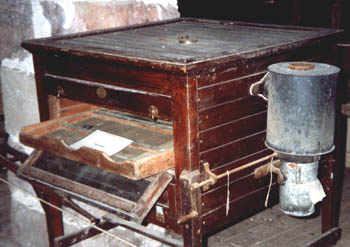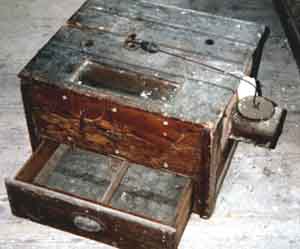Poultry

Every picture-book drawing of a farm has hens scratching about round the yard. Before the battery shed was thought of, this was probably a true picture.
Free-range farmyard eggs were strongly flavoured, plentiful in spring and scarce in winter. People stored them in times of plenty by coating them with water-glass and storing them in earthenware crocks. This prevented the eggs from ageing in the usual way, by keeping air out of the shell.

If the farm needed new stock, the eggs were collected from the nests, and hatched in an incubator.
Incubators such as these could be used to hatch hen, duck or pheasant eggs. The eggs needed turning night and morning, just as the mother bird would do on the nest to keep the embryos growing evenly.
Children could help by doing this job. They had other responsibilities too.
The temperature had to be kept constant to within a degree or two or the eggs would not hatch; if the temperature was too high or humidity was too low, ducklings might turn out to be damaged when they did hatch. If the weather was cold, someone had to get up in the night to check the incubator and adjust the heater. When the chicks hatched, they huddled together under the draped wool curtaining inside which held the warmth and felt like a mother bird's feathery breast.
John Gate: "It’s a Damlyn incubator. Chickens, barndoor fowl. Just a hundred egg size. We used to keep a few breeders separate and sell hatching eggs."